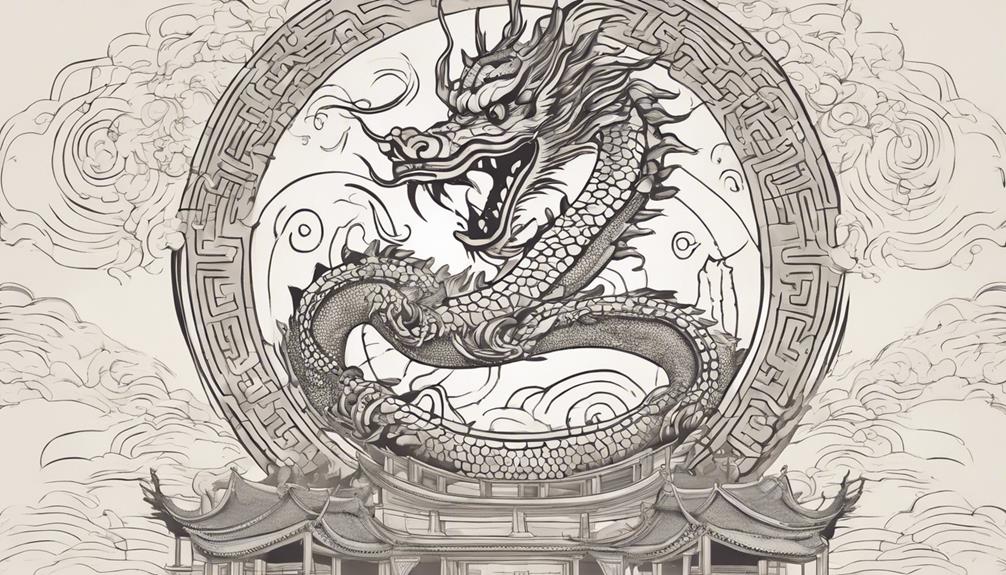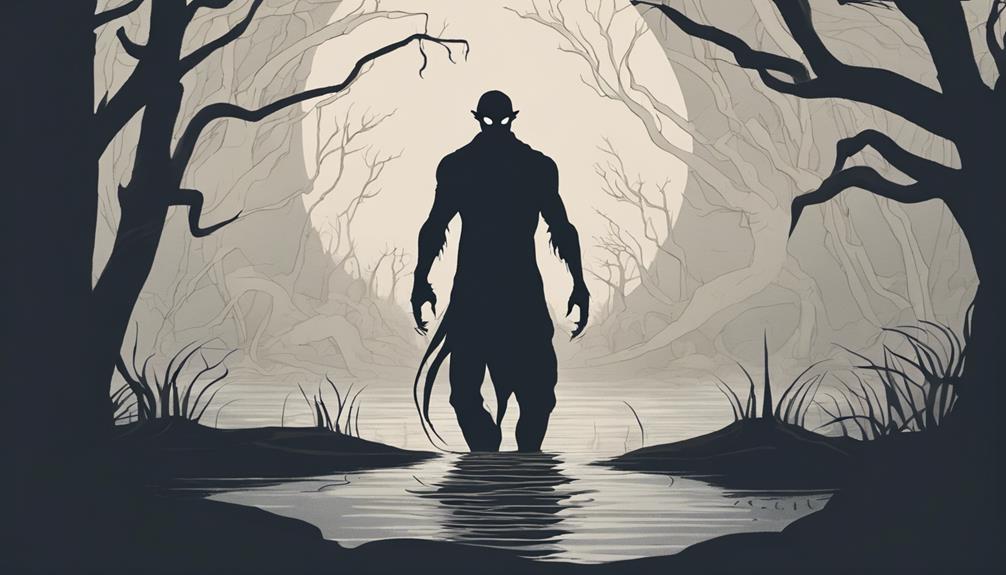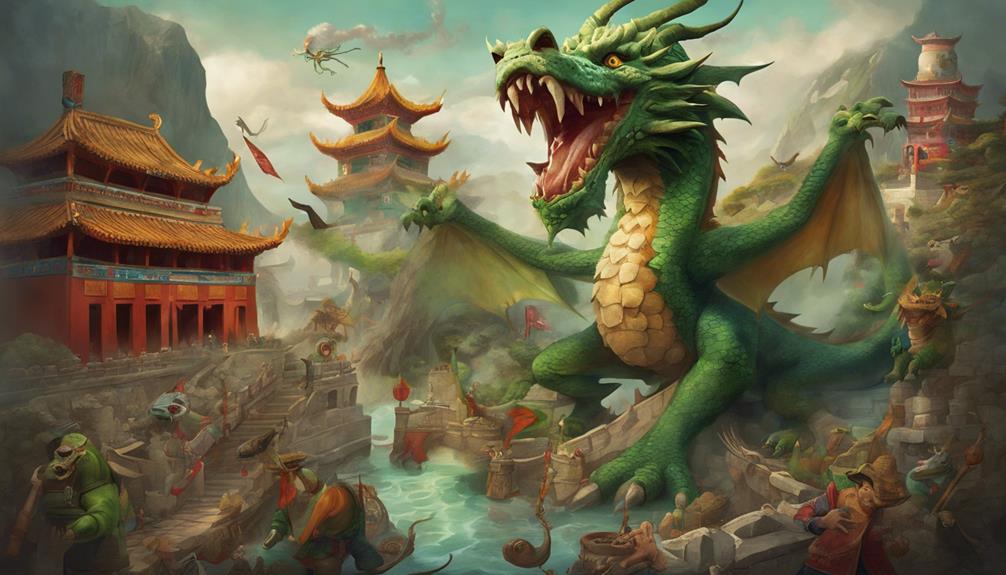Across diverse cultures, myths have woven intricate narratives that captivate and intrigue. From the Loch Ness Monster's elusive presence in Scottish waters to the Trojan Horse's cunning deception in ancient Greece, these tales often blur the lines between fact and fiction. As we explore the Fountain of Youth's allure and the Chinese Zodiac's enigmatic symbols, the question arises: do these myths hold a kernel of truth, or are they mere flights of fancy? Join us on a journey through the realms of legend and lore, where skepticism meets the unknown.
Key Takeaways
- Loch Ness Monster and Lizard Man myths intrigue with reported sightings and Aboriginal origins.
- Norse mythology's Thor embodies strength, protection, and moral lessons through his adventures.
- Ancient legends like the Trojan Horse and Fountain of Youth symbolize cunning warfare tactics and eternal youth desires.
- Chinese Zodiac and Atlantis myths influence beliefs, decisions, and discussions worldwide.
Loch Ness Monster Myth

The Loch Ness Monster myth, a longstanding enigma originating from Scotland in 565 AD, continues to captivate both locals and visitors alike with its elusive presence. Referred to affectionately as Nessie, this legendary creature has sparked numerous alleged sightings, with up to 20 reported annually in the 20th century. Despite the mystique surrounding Loch Ness, skepticism abounds regarding the existence of the creature, leading many to classify it as more of a legend or myth rather than a tangible reality.
From a scientific standpoint, the lack of concrete evidence and the inconsistent nature of reported sightings raise questions about the validity of the Loch Ness Monster's existence. While Loch Ness itself offers visitors picturesque castle ruins and breathtaking scenery, the mystery of Nessie draws in curious tourists eager to explore the enigmatic waters. Tours from Edinburgh cater to those intrigued by the Loch Ness Monster myth, providing an opportunity to delve into the history and lore surrounding this enduring legend.
Trojan Horse Legend
The Trojan Horse legend, a tale of strategic deception in ancient Greek warfare, has captivated audiences for centuries. While the story of the wooden horse infiltrating Troy is a well-known narrative, its historical accuracy remains a subject of scholarly debate. As a symbol of cunning and surprise attack, the Trojan Horse myth continues to intrigue and inspire discussions on the art of war and strategic thinking.
Trojan Horse Deception
One of the most enduring and intriguing tales from ancient warfare involves the cunning strategy known as the Trojan Horse deception. In Greek mythology, the Trojan Horse was a massive wooden horse used by the Greeks to deceive the Trojans during the Trojan War. This strategic deception allowed Greek soldiers to secretly enter Troy, ultimately leading to the city's downfall. The Trojan Horse story embodies the essence of using deception as a tactical advantage in warfare. While considered a myth, this narrative has inspired various literary and artistic works, showcasing the enduring power of cunning tactics and subterfuge in historical accounts. The Trojan Horse deception stands as a timeless example of the strategic prowess displayed in ancient conflicts.
Ancient Greek Warfare
During the historical accounts of ancient warfare, the strategic deployment of the Trojan Horse deception stands out as a notable example of cunning tactics utilized in conflicts. The Trojan Horse, a wooden structure filled with Greek soldiers, was used to infiltrate the walls of Troy during the Trojan War, leading to the city's downfall. This legend, although steeped in Greek mythology, highlights the importance of deception and military strategy in ancient Greek warfare. The tale of the Trojan Horse has transcended time, inspiring various forms of art, literature, and cultural references worldwide. While the specifics of the Trojan Horse may be embellished in myth, the core lessons of strategic thinking and tactical cunning remain relevant in the study of ancient warfare.
Epic Tale of Deceit
In the realm of legendary stratagems, the Epic Tale of Deceit unfolds a narrative of cunning manipulation and calculated subterfuge. The Trojan Horse, a pivotal element in the Trojan War of Greek myths and legends, symbolizes the art of deception in ancient warfare. Crafted by Epeius following the counsel of Odysseus, this giant wooden horse served as a clever ruse to breach the impenetrable walls of Troy. The unsuspecting Trojans, unaware of the Greek soldiers concealed within, brought the horse into their city, leading to their eventual downfall. This infamous trick exemplifies the power of deceit in historical conflicts, showcasing how strategic thinking and subterfuge can alter the course of epic battles.
| Trojan Horse Facts | |
|---|---|
| Originated in Greek mythology | Used as a trick in the Trojan War |
| Crafted by Epeius on Odysseus' advice | Led to the fall of Troy |
Fountain of Youth Legend
The concept of a Fountain of Youth, with its allure of eternal youth and rejuvenation, has captivated the imaginations of generations, stemming from the legend's origins in St. Augustine, Florida, and its association with explorer Ponce de León. Despite the romanticism surrounding this mythical spring, a more rational perspective reveals the following insights:
- The Fountain of Youth legend originates from St. Augustine, Florida, and was sought by explorer Ponce de León.
- It was believed that drinking from the Fountain of Youth could reverse the aging process and grant eternal youth.
- The legend of the Fountain of Youth has inspired explorers and adventurers for centuries in search of its mythical waters.
- Stories about the Fountain of Youth often involve magical springs or waters with rejuvenating properties.
- The Fountain of Youth legend is a prominent theme in folklore and mythology, symbolizing the desire for immortality and eternal youth.
While the idea of a Fountain of Youth may persist in folklore, scientific inquiry suggests that true eternal youth remains a product of fantasy rather than reality.
Chinese Zodiac Legend

The concept of the Chinese Zodiac, though deeply ingrained in traditional Chinese culture, poses a fascinating topic for analysis within a rational and skeptical framework. The Chinese Zodiac assigns animals to years in a 12-year cycle according to the lunar calendar. Each animal symbolizes different personality traits and characteristics, influencing how individuals born under each sign are perceived. The 12 animals in the Chinese Zodiac, such as the Rat, Ox, Tiger, and Dragon, are used to determine compatibility, forecast fortunes, and guide decision-making in various life aspects. According to the Chinese Zodiac legend, a race was held to determine the order of the animals at the Jade Emperor's palace. This mythical race not only adds an element of intrigue to the Zodiac but also showcases the cultural significance and storytelling prowess of ancient Chinese beliefs.
| Chinese Zodiac Animals | Personality Traits |
|---|---|
| Rat | Resourceful |
| Ox | Diligent |
| Tiger | Brave |
Adventures of Thor Myth
The adventures of Thor myth have captured the imagination of many with tales of his mighty hammer, battles with giants, and interactions with trickster gods like Loki. While these stories are rich in symbolism and cultural significance, their basis in reality is questionable from a scientific perspective. The fantastical elements of Thor's adventures often serve as moral lessons or explanations for natural phenomena in Norse mythology.
Thor's Mighty Hammer
Thor, known for his mighty hammer Mjölnir, has long been a prominent figure in Norse mythology due to his association with thunder and protection.
- Thor, a Norse god famous for his hammer, is the son of Odin and a key figure in Norse mythology.
- Known for creating thunder and lightning with his hammer, Thor is revered by the Vikings.
- Thor's adventures often involve battling giants and riding a chariot pulled by goats.
- The hammer wielded by Thor, called Mjölnir, is a symbol of power and protection in Norse mythology.
- Norsemen believed in Thor's might and sought his favor for successful journeys and battles.
Loki's Deception Tricks
Loki's cunning and deceptive nature in Norse mythology, particularly in the Adventures of Thor myth, introduces an element of unpredictability and challenge for the other gods involved. As the trickster god of Norse mythology, Loki's reputation for deception precedes him, with his mischievous tricks often causing chaos and strife among the gods. Through his shape-shifting abilities and clever schemes, Loki continuously tests the boundaries of trust and loyalty, frequently targeting Thor and other deities. Despite the disruptions he brings, Loki's role in Norse myths is undeniable, adding layers of complexity and intrigue to the tales of the gods. His deceitful nature serves as a reminder of the fine line between chaos and order in the intricate web of Norse mythology.
Giants and Monsters
Within the tapestry of Norse mythology, the formidable presence of Giants and Monsters looms large, embodying primal forces that challenge the very fabric of existence. In the Adventures of Thor, the Norse god of Thunder, these epic battles against giants and monsters showcase his bravery and strength. Thor's iconic weapon, Mjölnir, symbolizes his power over thunder and lightning, aiding him in vanquishing foes. As the son of Odin, Thor's role in protecting Asgard from these creatures was vital in Viking belief. The reverence Vikings held for Thor stemmed from his unwavering courage and his representation of defense against malevolent forces. The enduring legacy of these tales highlights the significance of Norse mythology in Scandinavian culture.
Atlantis Myth
The Atlantis myth, originating from Plato's dialogues 'Timaeus' and 'Critias' in ancient Greece, has captivated minds with its enigmatic tale of a vanished advanced civilization. Described as a powerful society that met its end in a cataclysmic event, Atlantis has sparked numerous theories regarding its existence and location. Speculation places Atlantis anywhere from the Mediterranean to the Caribbean, with some interpreting it as a symbolic representation rather than a physical place. The mystery of Atlantis continues to influence various fields, including archaeology and literature, despite the lack of concrete evidence supporting its actual existence. While the allure of a lost civilization is enticing, approaching the Atlantis myth with a critical and rational mindset is essential to separate fact from fiction. Let's delve deeper into this intriguing topic through the table below:
| Key Points | Description |
|---|---|
| Origin | Plato's dialogues 'Timaeus' and 'Critias' in ancient Greece |
| Civilization | Described as powerful and advanced, disappearing due to a cataclysmic event |
| Location | Theories range from the Mediterranean to the Caribbean, actual location unknown |
| Interpretations | Some view Atlantis as symbolic, possibly inspired by real ancient cultures |
| Influence | Inspires exploration and speculation in fields like archaeology and literature |
Lizard Man Legend

The Lizard Man legend, stemming from Aboriginal Australian mythology, presents a narrative intertwined with exceptional boomerang skills attributed to a figure named Alinga. Alinga, a central figure in the legend, was renowned for his unparalleled expertise in wielding boomerangs, a skill that was said to surpass any mortal's abilities. According to the myth, Alinga's boomerang was believed to have undergone a miraculous transformation, shaping the majestic Uluru rock formation. Uluru, a colossal sandstone monolith that stands as a testament to time, is estimated to be around 600 million years old, further adding to the mystique surrounding Alinga's prowess. Depicted as a primordial being, Alinga is said to have roamed the ancient Earth, leaving behind a legacy that continues to captivate imaginations.
- The Lizard Man legend originates from Aboriginal Australian mythology.
- The Lizard Man, named Alinga, was known for his exceptional boomerang skills.
- According to the legend, Alinga's boomerang transformed into the iconic Uluru rock formation.
- Uluru, a 600 million-year-old sandstone monolith, is believed to have been Alinga's boomerang.
- Alinga is depicted as a primordial being who roamed the Earth in ancient times.
Frequently Asked Questions
What Are the Common Myths That Exist Across Cultures?
Various cultures across the globe possess a rich tapestry of ancient stories and folklore tales that are steeped in cultural beliefs and mythological creatures. These narratives often feature supernatural beings, legends, and lore that offer insights into the diverse interpretations of historical events or moral lessons. While these myths can be captivating, it is crucial to approach them with a rational and skeptical mindset, appreciating them for their cultural significance rather than historical accuracy.
What Are Some Modern Day Myths?
In the realm of modern myths, urban legends, internet hoaxes, and conspiracy theories hold sway. These narratives often blend folk beliefs with supernatural creatures and paranormal phenomena. In today's digital age, misinformation spreads rapidly, shaping societal beliefs and behaviors. Fact-checking and critical analysis are crucial in debunking these myths, fostering a more informed and discerning public. By dissecting these narratives, we can delineate between fiction and reality, promoting a more grounded understanding of the world.
What Are Some Examples of Myths?
Greek gods, Norse legends, Chinese dragons, African folklore, Aztec myths, Aboriginal stories, Indian epics, Japanese spirits, Celtic tales, Mayan beliefs, Medieval legends, and Native American myths are examples of the diverse myths found worldwide. These stories, rooted in cultural beliefs and traditions, offer insights into the societies that created them. While fascinating, myths are not empirical truths but symbolic narratives that reflect human experiences and values throughout history.
What Is the Most Common Mythology?
When considering the most common mythology worldwide, it is important to acknowledge the widespread influence of Greek mythology. Greek myths featuring gods like Zeus and Athena have permeated various aspects of contemporary culture. While Norse, Egyptian, Chinese, Native American, and Hindu mythologies also hold significant cultural importance, Greek mythology is often recognized as one of the most prevalent and well-known mythologies globally. Its impact on literature, art, and popular culture further solidifies its widespread recognition.
Conclusion
In conclusion, myths and legends from around the world offer a glimpse into the cultural beliefs and storytelling traditions of different societies. While these stories may contain fantastical elements and supernatural beings, they often serve as a reflection of human experiences and values. By exploring and analyzing these myths, we can gain a deeper understanding of the diverse perspectives and beliefs that have shaped civilizations throughout history.
